The Three Lives of Thomasina (1963): A Deep Dive into Disney’s Most Philosophical Animal Film
A cat believed dead, a healer feared as a witch, and a town that rediscovers its heart—The Three Lives of Thomasina is no ordinary Disney story.
The Three Lives of Thomasina
Director: Don Chaffey
Country: UK, US
Disney’s shift from dogs to cats in film
Walt Disney was a lifelong dog lover, so his early productions, Lassie Come Home (1943) and Old Yeller (1957), prominently featured dogs rather than cats. However, The Incredible Journey (1963) changed this trend. This film, where a Siamese cat and two dogs embark on a perilous 200-mile journey home, demonstrated that cats could steal the spotlight from dogs. Disney recognized the potential appeal of cat-centric stories, especially considering there were 27 million cat owners in America. This insight led him to adapt Paul Gallico’s 1957 children’s novel Thomasina, the Cat Who Thought She Was God. Don Chaffey was brought in to direct, having previously helmed the Disney film Greyfriars Bobby: The True Story of a Dog (1961) and his now legendary Jason and the Argonauts (1963).
Plot summary
The film opens in the small Scottish town of Inveranoch in 1912 and features a song by The Wellingtons, known for their work on the Gilligan’s Island theme. Thomasina (voiced by Elspeth March) is a proud and independent cat who belongs to the seven-year-old Mary MacDhui (Karen Dotrice). Thomasina narrates the story, giving the audience a glimpse into her perspective as a pet who feels somewhat superior to humans.
Mary’s father, Andrew MacDhui (Patrick McGoohan), is the local veterinarian. After the death of his wife, he has become emotionally distant. He has a cold, clinical approach to his work, viewing animals more as subjects for treatment than as beloved companions. Furthermore, he has lost his faith not only in God but also in his ability to heal the pets the locals bring to him. He is often quick to euthanize them instead of looking for a solution that he does not believe exists. He does not leave the pets’ owners the time to say goodbye to their furry friends and gaslights them when grieving. This behavior causes friction with the townspeople, who just see him as “an animal killer.”
One day, Thomasina injures herself at the market and becomes ill with tetanus. Believing there is no cure for her, Andrew coldly decides to euthanize the cat, much to Mary’s horror, who is very attached to the animal. Mary is heartbroken and loses faith in her father. Together with her friends, she holds a “funeral” for her cat in the woods, after which they leave her there.
Thomasina enters a dream-like state, imagining herself in the Egyptian afterlife, where cats are revered as gods. She feels she has been unjustly killed and laments her fate.
But is she truly dead?
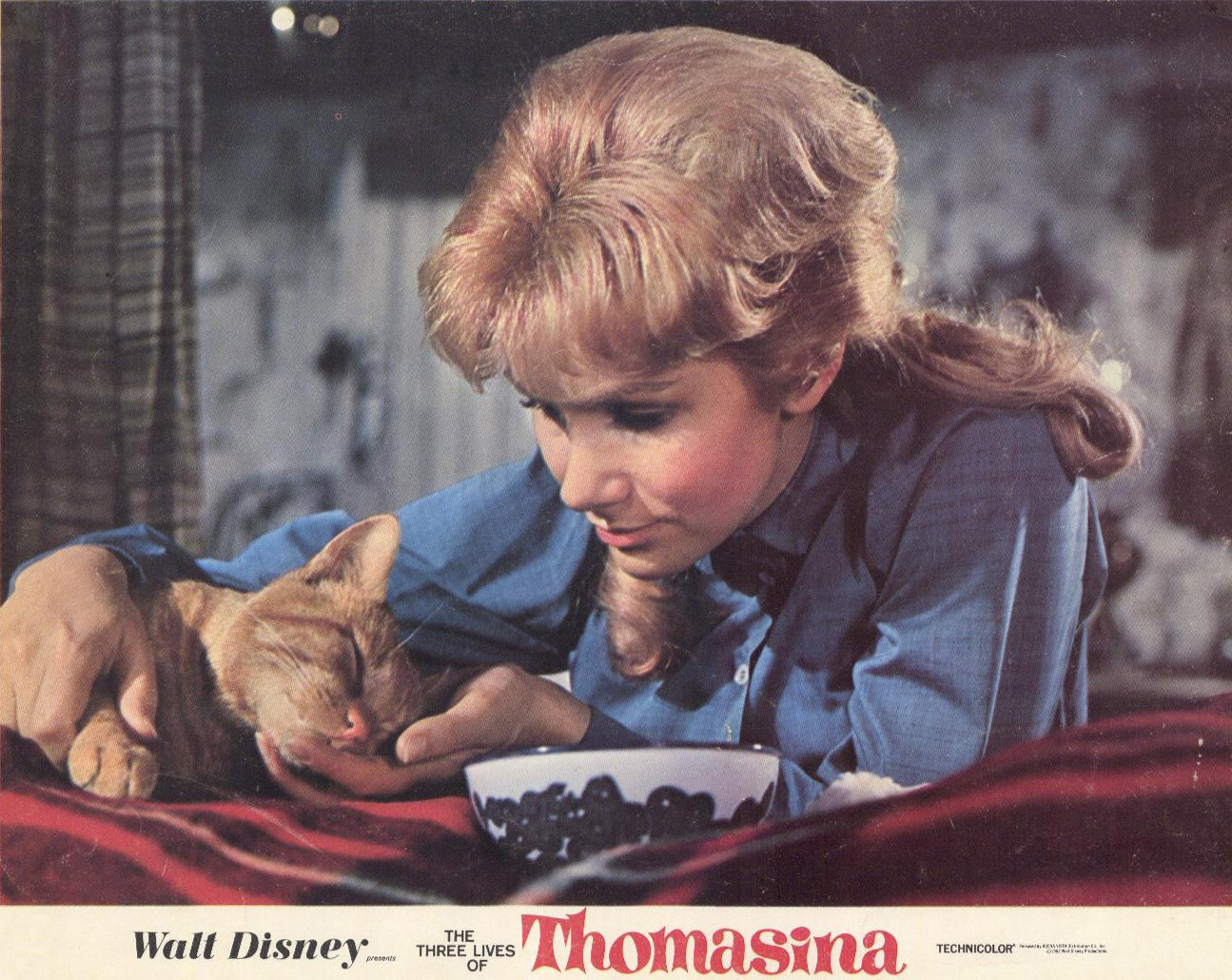
Lori MacGregor (Susan Hampshire), a reclusive and mysterious woman who lives in the woods, finds Thomasina. Lori is rumored to be a witch, but in reality, she is a kind-hearted healer with a deep understanding of animals. She takes Thomasina under her care and nurses her back to health.
Meanwhile, Mary remains heartbroken over the loss of Thomasina and estranged from her father. She encounters Lori in the woods and starts to bond with her, unaware of the connection with Thomasina. Lori’s gentle nature and ability to communicate with animals slowly win Mary’s trust.
Andrew notices Lori’s influence on Mary and gradually sees the value in Lori’s compassionate approach to animals. This is highlighted when Lori begs him to
try and save a dying badger instead of putting it to sleep, saying he has the skill that she does not. He succeeds in healing it against all odds.
What Andrew suspected even less, though, is that thanks to his encounter with Lori, he himself is starting to heal. He opens up to her about personal things, and they form a friendship, which later turns into love. Andrew’s transformation is complete when he helps Lori save a circus bear, risking his life. This act of bravery and compassion wins the admiration of the townspeople.
Meanwhile, the trauma of losing her beloved cat has killed something within Mary. She has fallen unconscious, and without Thomasina, her life is lost.
The now fully recovered Thomasina begins to remember her life with Mary and Andrew. Eventually, she finds her way back to the MacDhui household. Mary wakes up, and Andrew’s belief in miracles is restored.
The film concludes with a renewed sense of family and community. Thomasina, now living her third life, is content and happy, having brought together the people she loves. Andrew, Mary, and Lori form a new, loving family, and the townspeople respect and appreciate Lori’s wisdom and Andrew’s newfound compassion.
Themes in The Three Lives of Thomasina: death, faith, and redemption
This Disney movie rings benign and cheesy on the surface, but deep down, it chimes with a firm investment in themes such as death, grief, and faith. On the other hand, The Three Lives of Thomasina merely hints at themes of reincarnation and mysticism. Does Thomasina come back to life after being euthanized? Not really. She was probably only fighting for her life when Lori found her, even though it is technically unlikely for an animal to survive euthanasia if performed correctly (though, in rare cases, insufficient dosage, resistance to drugs, or poor injection technique could theoretically result in a failed attempt). In the book, the author explains that when Andrew’s assistant administered chloroform to the cat, it was not enough, so she was only profoundly asleep when the children retrieved her body from the garbage heap. Chaffey does not clarify this detail in the film adaptation. Also, when Thomasina awakens in the book, she believes she is the Egyptian cat god Bastet and grapples with being treated as an ordinary cat by everyone around her. Even though Thomasina does not recall her past life, she senses Andrew is a cat killer and resolves to punish him for his crimes. At one moment, Andrew drops to his knees and prays for help from God, unaware that Thomasina is in the tree above him. Mistakenly thinking he is praying to her, Thomasina decides he merits mercy and resolves to help him.
The portrayal of witchcraft is realistic. Lori is only labeled a witch and even pretends to be one when the children watch her. These mystical elements are not just for entertainment. They metaphorize the cycles of life, death, and rebirth. They emphasize that faith can resolve emotional and psychological conflicts, ultimately leading to finding peace and understanding. When Dori pleads, “Oh God, please God, help me,” Andrew appears and saves the badger. Faith changes everything.
In that regard, Patrick McGoohan (John Draka in the TV show Danger Man) plays the role of Andrew a little too unnuanced. It is hard to sympathize with him, even when he acknowledges he has been wrong.
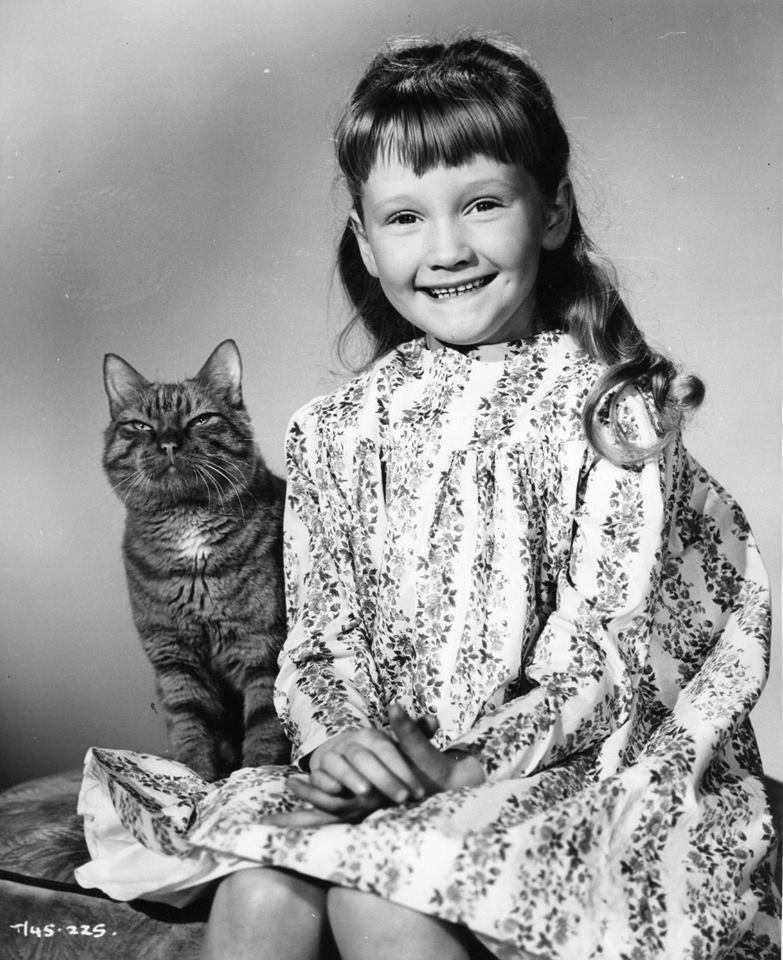
Karen Dotrice shines
Karen Dotrice, however, is a revelation. As the daughter of Tony award-winning actor Ray Dotrice, she became interested in acting when she saw her father perform on stage. At age four, she delivered her first stage performance in an RSC production of Bertolt Brecht’s The Caucasian Chalk Circle at the Aldwych Theater in London. This performance caught the attention of Disney scout Maude Spector, who later introduced her to Walt Disney. This relationship developed into a strong bond as Dotrice saw the famous producer as a father figure. She was only eight when Disney offered her the central part in The Three Lives of Thomasina, her screen debut. Her heartfelt and mature performance in that film later earned her a role in the 1964 musical fantasy Mary Poppins, in which she played Jane Banks. By the way, Matthew Garber, who plays her brother, Michael Banks, in that film, also had an essential part in The Three Lives of Thomasina as one of Mary’s close friends. They played siblings once again in one of Disney’s last films, the 1967 comedy The Gnome-Mobile.
Casting the perfect cat
Casting the perfect cat for the role of Thomasina was crucial. Though the book describes Thomasina with some white markings, the filmmakers sought a red tabby cat. They searched homes across England, placed advertisements in newspapers, and traveled thousands of miles by road and rail. They settled on a Mackerel-patterned tabby from Southampton. It had the right coloring and a cooperative demeanor, making it ideal for primary shots and close-ups.
As is common in animal-centric films, the production used several orange tabbies for stunts and running scenes. If you watch closely, you will notice Thomasina’s face and coat patterns change from shot to shot. Depending on the scene, she has either a Mackerel or a Classic tabby pattern. She occasionally also sports a white spot on her chest.
Unfortunately, the cats did not have the best time on set. They were often wet, pushed around in a pram, dressed in bonnets and bibs, carried around, bounced off trampolines, and chased by a pack of dogs. During an interview on the podcast Stu’s Show, Dotrice explained to host Stu Shostak that the cats hated her and that she frequently went home with scratches. It took her decades to recover from the trauma and feel ready to adopt a pet herself.
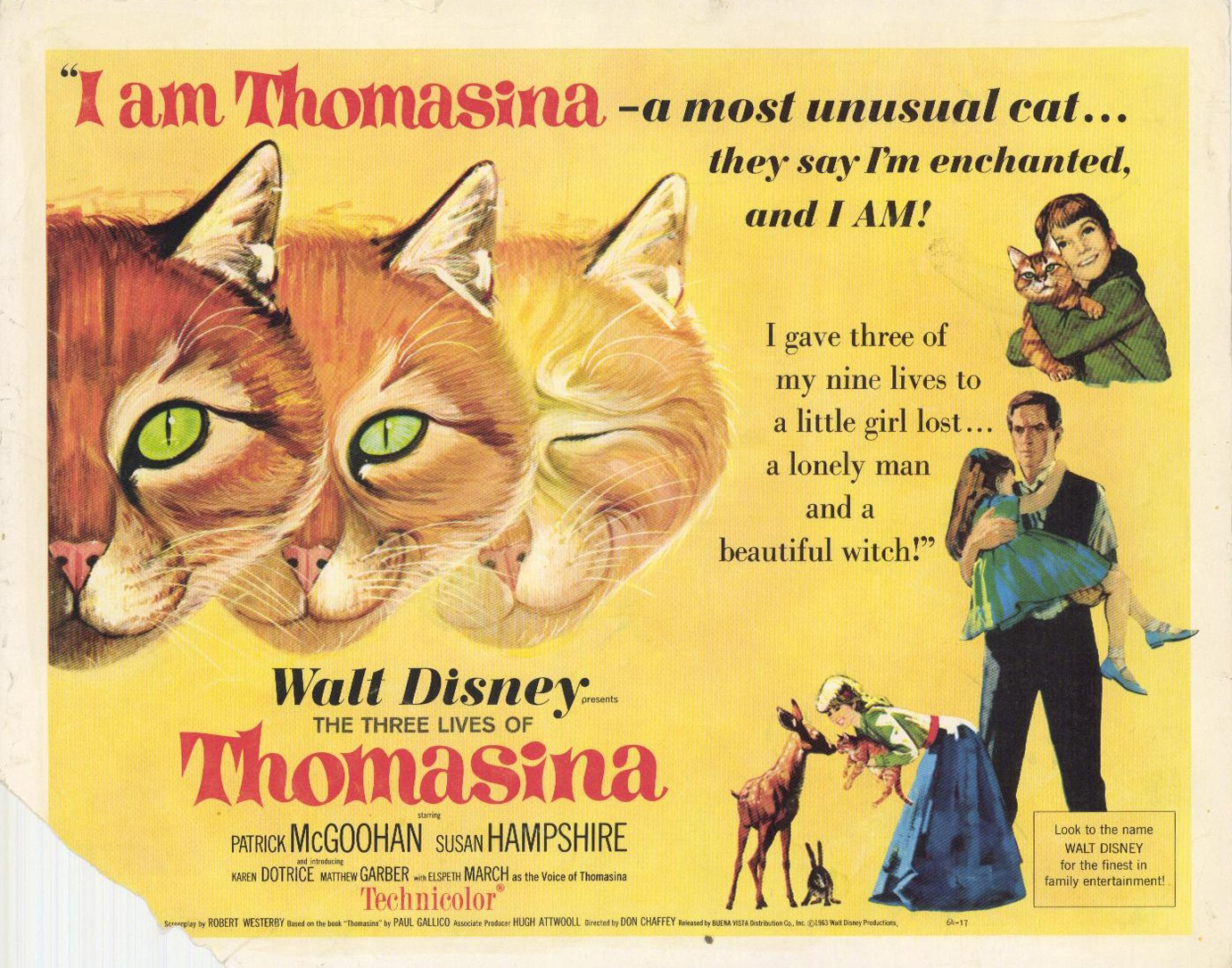
Legacy: The Three Lives of Thomasina and Disney’s cat-focused era
On the other hand, viewers enjoyed themselves and praised the film for Dotrice’s strong performance and the charm of the feline protagonist(s). Following the successes of The Incredible Journey and The Three Lives of Thomasina, Disney went on to create another cat-focused film based on the book Undercover Cat by The Gordons, later renamed That Darn Cat!
The Three Lives of Thomasina where to watch
The Three Lives of Thomasina dvd is currently available from Amazon.
This essay on The Three Lives of Thomasina was previously published in the book Meow! Cats in Horror, Sci-Fi, and Fantasy Movies.
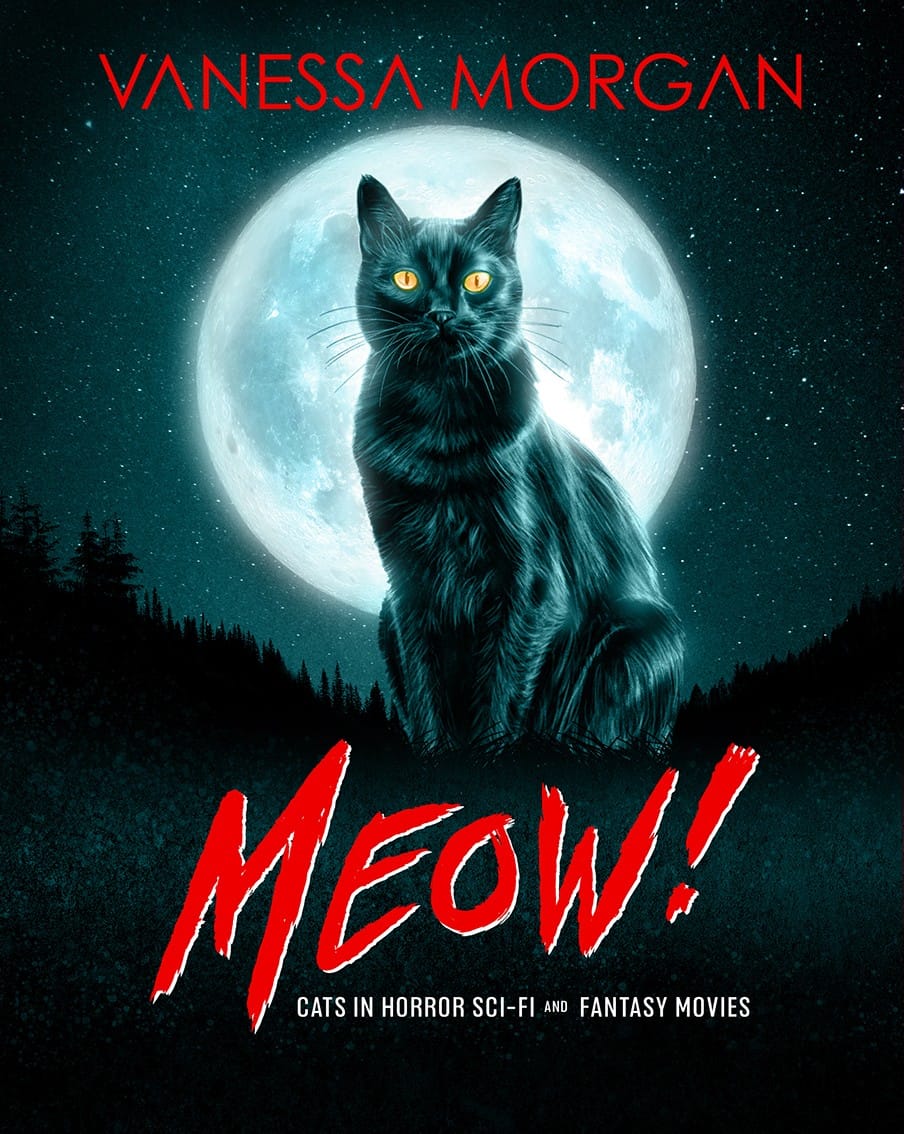
About the author
Vanessa Morgan is the editor of When Animals Attack: The 70 Best Horror Movies with Killer Animals, Strange Blood: 71 Essays on Offbeat and Underrated Vampires Movies, Evil Seeds: The Ultimate Movie Guide to Villainous Children, and Meow! Cats in Horror, Sci-Fi, and Fantasy Movies. She also published one cat book (Avalon) and four supernatural thrillers (Drowned Sorrow, The Strangers Outside, A Good Man, and Clowders). Three of her stories became movies. She introduces movie screenings at several European cinemas and film festivals and is also a programmer for the Offscreen Film Festival in Brussels. When she is not writing, you will probably find her eating out or taking photos of felines for her website, Traveling Cats.
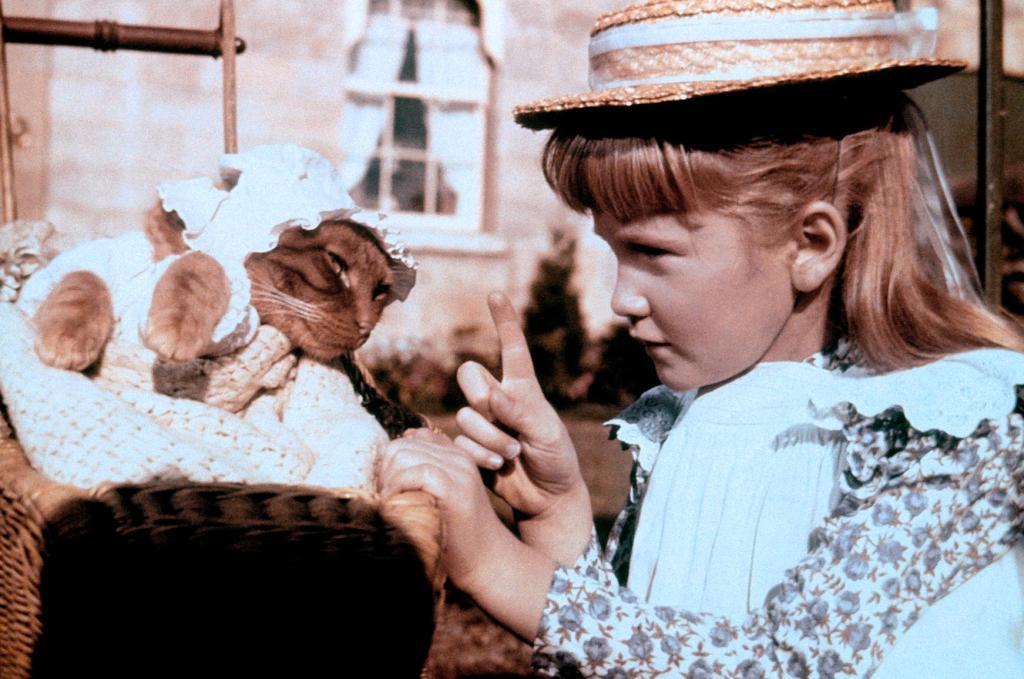
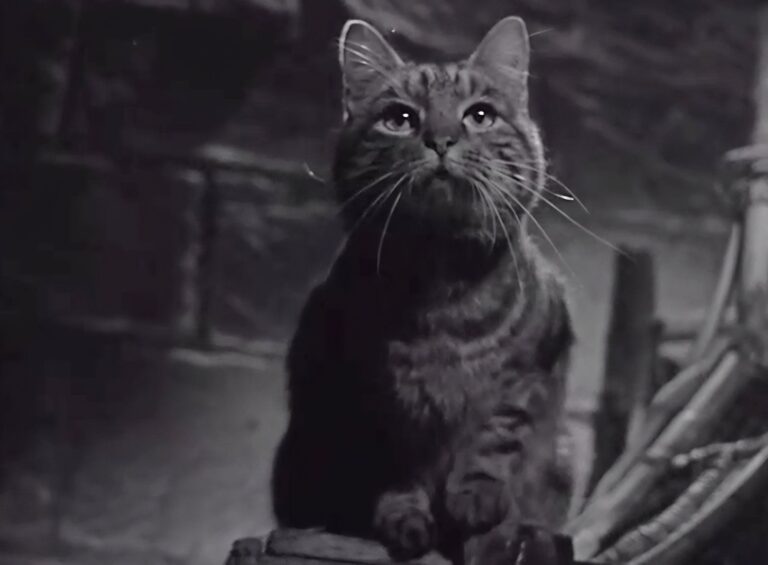
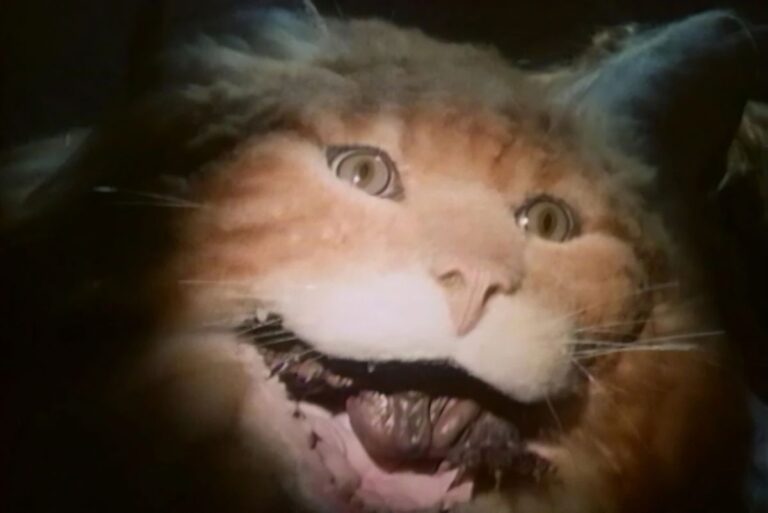
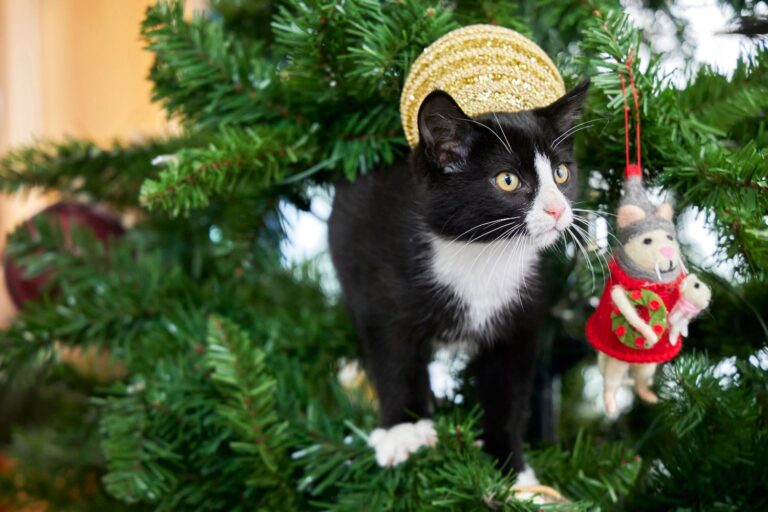
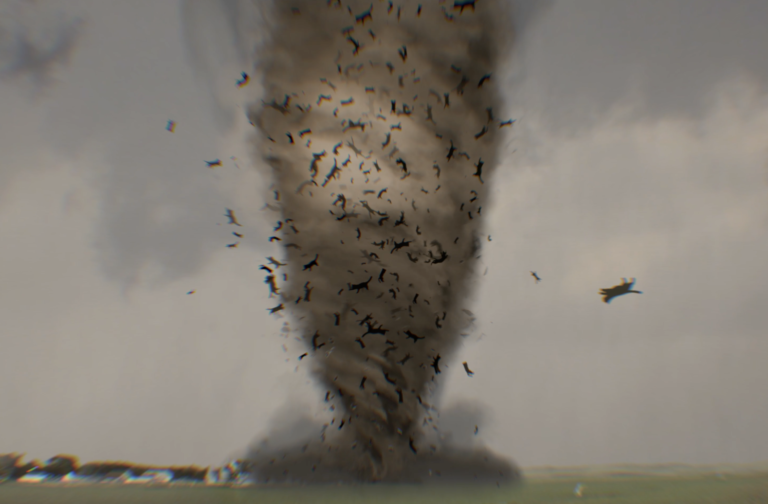
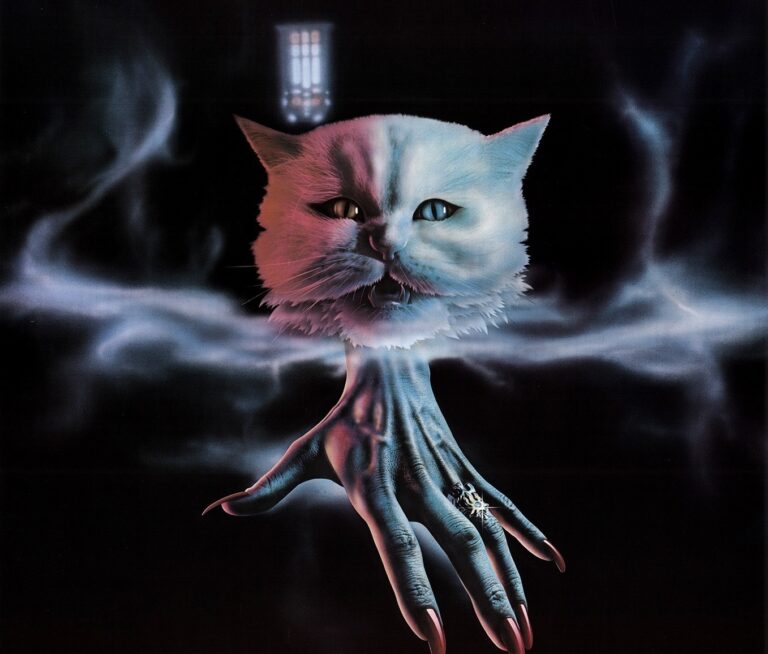
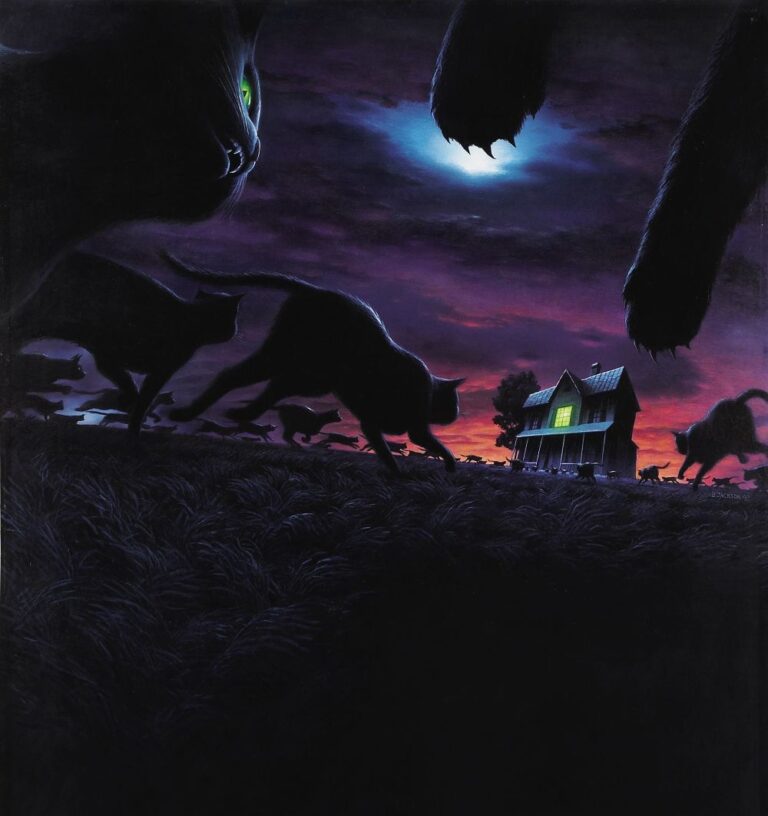
What a delightful post. Cats are most mysterious and their movies are always most wonderful.
Thank you for joining the Awww Mondays Blog Hop.
Have a fabulous Awww Monday and week. ♥